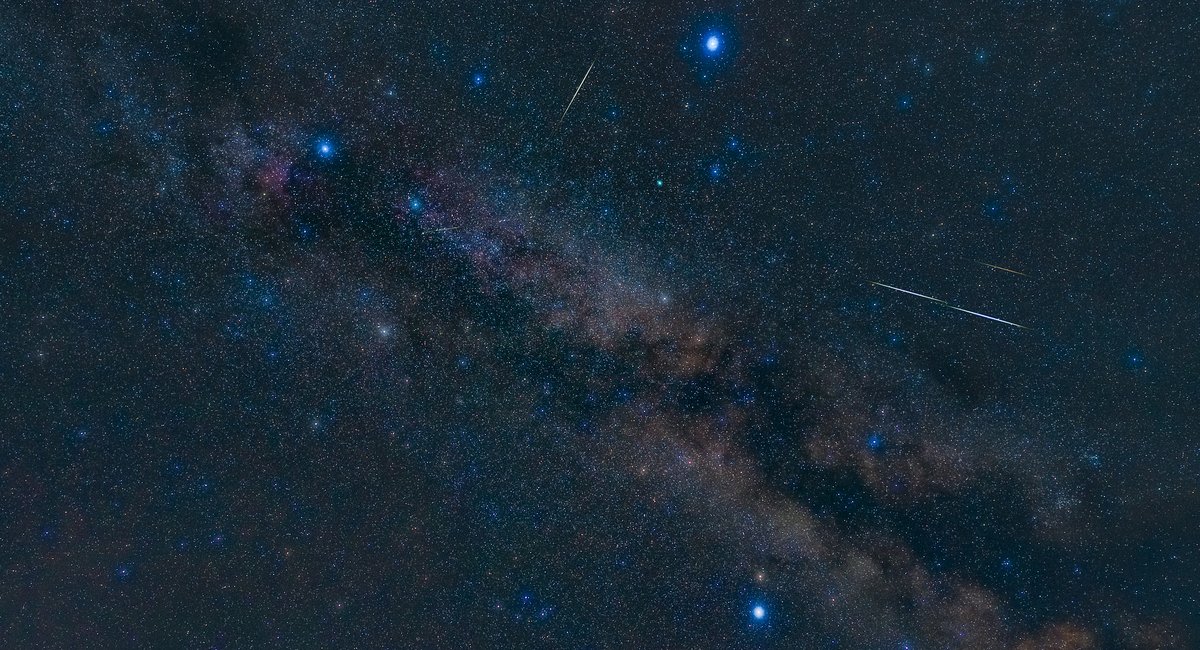This month, the evenings are a great time to look up.
The eye-catcher of the night sky is the Summer Triangle, which consists of three bright stars from three different constellations: Altair of Aquila the Eagle, Deneb of Cygnus the Swan and Vega of Lyra. Stargazers can also see planets, star clusters and two meteor showers – all with the naked eye. Most can be seen in the five boroughs, in a park, in a cemetery or in other dark places.
Jackie Faherty, an astrophysicist at the American Museum of Natural History, called the Summer Triangle “the most important thing in the sky in July.”
Another summer constellation, Scorpius, is not hard to find. It is shaped like a scorpion and at the heart of the constellation is an orange-red supergiant called Antares.
Spica, a very bright, brilliant blue star in the sky, is located in the constellation Virgo. This star will perform a kind of magic trick on July 13 at around 11:25 p.m. That evening, astronomy enthusiasts will be able to watch the moon come closer and closer to Spica until it disappears behind its lunar neighbor.
“Even in New York City you can see Spica,” Faherty said. “Part of the joy is seeing the star reappear as the moon passes by.”
The Pleiades star cluster, which means seven sisters, contains over a thousand stars loosely bound by gravity. The cluster is also called Subaru (hence the car company’s logo).
Often mistaken for stars, there are three planets visible to the naked eye: Mars, Saturn and Jupiter. They are not difficult to find in the dissonance because they are bright, but not twinkling.
At the beginning of the month, Saturn rises just before midnight, but by the end it will be visible as early as 10 p.m. For night owls, Mars and Jupiter will join Saturn in the sky after 1 a.m.
“You can have Mars, Jupiter and Saturn all at the same time,” Faherty said. “They’re bright, beautiful planets.”
There are also two meteor showers this month. Southern Delta Aquariids begins on July 18 and lasts through August 21. The shower peaks on July 29-30 with 20 meteors per hour traveling at 25 miles per second. The shooting stars appear in the southern part of the sky, coming from the constellation Aquarius.
The Southern Delta Aquariids are space debris left over from comet 96P/Machholz, discovered in 1986. The comet is 6.5 kilometers wide and orbits the Sun in a short five-year orbit.
The second meteor shower of the month is the Perseids, which begin on July 14 and end on September 1. At their peak, on August 11 and 12, up to 100 meteors per hour will shoot through the sky at a speed of 60 kilometers per second.
The meteor shower is one of Faherty’s favorites because of the bright and abundant shooting stars. The cosmic light show is the result of space dust from comet 109P/Swift-Tuttle, which takes 133 years to orbit the sun. The comet’s nucleus is 16 miles wide.
The best way to see a meteor shower is from your back under a dark sky. Be patient. It takes about 30 minutes for your eyes to adjust to the darkness, making the meteors more visible.
Another beautiful sight to see with the naked eye at this time of year is the Milky Way. In July it is high in the sky, especially towards the end of the month.
The constellations Scorpio and Sagittarius are nearby and can be used to find the center of the Milky Way. It is difficult to see from the city, but New Yorkers vacationing under darker skies like the Catskills or further north will see clouds in the night sky.
“It’s a nebulosity that’s representative of all these stars that make up the disk of the Milky Way that we live in,” Faherty said. “The Milky Way is so beautiful — it stretches from one side of the sky to the other, and it just looks a bit like a white river.”
While binoculars and telescopes aren’t necessary, a closer look can bring many of these celestial sights to life, including Saturn’s rings and planetary surfaces and moons. The Amateur Astronomers Association hosts free public viewings around the city several times a week.
